Editors

- Vyacheslav Karpinsky [25] (from 1918 to 1922 with interruptions)
- Lev Sosnovsky (from March 1918, [8] and also in 1921)
- Yakov Yakovlev (from 1924)
- M.S.Grandov [8] (from 1928)
- E.P. Atakov (from 1929)[ citation needed ]
Bednota (Russian : Беднота, "Poverty" or "The poor") was a daily newspaper designed and focused toward a peasant readership that was issued by the Central Committee of the Communist Party of the Soviet Union [1] in Moscow, Russia, [2] from March 1918 to January 1931. [3] It has been described as the first Soviet newspaper "designed primarily for the lower-class or common reader". [4]
One of its predecessors was the Petrograd-based newspaper Derevenskaya Bednota , which Soviet leadership forced to merge with Bednota. [5] Two additional newspapers, Soldatskaya Pravda , printed in Petrograd and Derevenskaya Pravda , printed in Moscow, were also merged with Bednota in 1919, per a decision of the Central Committee of the Communist Party for this to occur. [6] [lower-alpha 1] [lower-alpha 2]
Bednota served as a means for the Communist party to spread propaganda among the peasant population in the Soviet Union. [9] [lower-alpha 3] At the time, peasants accounted for over 70% of the Russian population, and Bednota was created by the Bolsheviks as a means to address this aspect of the citizenry. [9] During its heyday, Bednota had the highest circulation amongst all of the peasant newspapers in the Soviet Union. [9] The newspaper also featured letters from peasants and various correspondences. [11] During the Russian Civil War (7 November 1917 — 16 June 1923), Bednota was the Red Army's paper as well – in June 1920 the Red Army's received circulation of Bednota totaled 265,000. [12]
At times, Vladimir Lenin was directly involved in making suggestions and editorial decisions for Bednota. [13] For example, Lenin made a recommendation to Bednota for the publication to sort and organize the letters to the editor it received and to take note of matters that were important or new in the letters. [13] Lenin also advised that we wanted to be kept abreast about the content of reader's letters. [13] Lenin kept a close study of content that Soviet newspapers published in general, and also had a strong special interest in Bednota's letters to the editor received from peasants, which Lenin valued highly. [14] Vyacheslav Karpinsky, one of the editors of Bednota, was personally acquainted with Lenin, and Karpinsky even named his son, Len Karpinsky, after Lenin. [15] One of Lenin's requirements was for Karpinsky to provide reports directly to him quantifying the number of letters received by the newspaper. [16] During the Russian Civil War, Lenin ordered Bednota and the state-controlled Pravda to "forward letters to him on a regular basis". [17] During Bednota's earlier days, Inessa Armand (8 May 1874 – 24 September 1920), a very close friend of Lenin's, [18] was the editor for the Women's sections of Bednota and Pravda. [19]
During the spring of 1919, Bednota and pravda both began publishing short coverage about "Volunteer Saturdays", for citizens to assist with work in various enterprises and railroad repair shops. [20] One of Bednota's pieces included information about 130 volunteer mechanics and engineers who worked to repair 49 rail cars on a Volunteer Saturday, which began with a headline stating, "If Only Everyone Would Do This". [20]
During the first few years of the New Economic Policy in the Soviet Union, which commenced in March 1921, some newspapers had problems in getting their publications out into rural areas. [21] In the book The Birth of the Propaganda State it is posited that at this time, Bednota, the leading peasant newspaper at that time, was "completely unable to overcome the difficulties". [21] The book denotes that at the time, while Bednota did focus on agricultural problems and issues, it was not written in a style that appealed to a peasant readership. [21] It is further posited that Bednota had far more appeal and readership among activist Bolsheviks that worked in the countryside. [21]
In May 1923, the Soviet leadership stepped up a campaign of "political mobilization" in response to perceived threats from the United Kingdom after George Curzon, 1st Marquess Curzon of Kedleston gave an ultimatum to the Soviet government to repeal the death penalty for British spies captured in the Soviet Union, to abandon the dissemination of propaganda against the United Kingdom, and for Soviet leaders in Afghanistan, India and Persia to be recalled. [22] The British ultimatum was based in part upon Communist International's work to incite revolutionary activities in Afghanistan, India and Persia that went against the interests of the United Kingdom. [22] During this time, Vladimir Lenin's health was also seriously declining, which led Soviet leadership to entertain notions that foreign countries were assuming that Soviet leadership was weakening, and could potentially be overthrown. [22] These factors all led to Bednota's editorial focus shifting to publish more coverage regarding foreign affairs. [22] At that time, the newspaper's overall content contained more information about international matters and the Soviet Army, and much less about agricultural issues. [22]
Despite its design and editorial focus to attract lower-class readers, Bednota did not gain a relatively-large readership. [10] At times, Bednota and some other newspapers were criticized by some Communist Party leaders for being "unreadable" because of typographical errors, spacing errors, ambiguous headlines, poor grammar, poor typesetting and graphics, making it and some other newspapers at the time "incomprehensible". [23]
In 1931 the newspaper ceased to exist after being merged with "Socialisticheskoe Zemledelye" (Socialist Agriculture). [3] [24]

Publications of the Communist Party of the Soviet Union:

Leninism is a political ideology developed by Russian Marxist revolutionary Vladimir Lenin that proposes the establishment of the dictatorship of the proletariat led by a revolutionary vanguard party as the political prelude to the establishment of communism. Lenin's ideological contributions to the Marxist ideology relate to his theories on the party, imperialism, the state, and revolution. The function of the Leninist vanguard party is to provide the working classes with the political consciousness and revolutionary leadership necessary to depose capitalism.

Nikolai Ivanovich Bukharin was a Russian revolutionary, Soviet politician, and Marxist theorist. A prolific author on economic theory, Bukharin was a prominent Bolshevik and was active in the leadership of the Communist Party of the Soviet Union from 1917 until his purge in the 1930s.

The Russian Revolution was a period of political and social change in the Russian Empire, starting in 1917. This period saw Russia abolish its monarchy and adopt a socialist form of government following two successive revolutions and a bloody civil war. The Russian Revolution can also be seen as the precursor for the other European revolutions that occurred during or in the aftermath of World War I, such as the German Revolution of 1918–1919.

Agitprop refers to an intentional, vigorous promulgation of ideas. The term originated in the Soviet Union where it referred to popular media, such as literature, plays, pamphlets, films, and other art forms, with an explicitly political message in favor of communism.

The April Theses were a series of ten directives issued by the Bolshevik leader Vladimir Lenin upon his April 1917 return to Petrograd from his exile in Switzerland via Germany and Finland. The theses were mostly aimed at fellow Bolsheviks in Russia and returning to Russia from exile. He called for soviets to seize state power, denounced liberals and social revolutionaries in the Provisional Government, called for Bolsheviks not to cooperate with the government, and called for new communist policies. The April Theses influenced the July Days and October Revolution in the next months and are identified with Leninism.
"Dual power" refers to the coexistence of two governments as a result of the February Revolution: the Soviets, particularly the Petrograd Soviet, and the Russian Provisional Government. The term was first used by the communist Bolshevik leader Vladimir Lenin (1870–1924) in the Pravda article titled "The Dual Power".
The history of the Communist Party of the Soviet Union was generally perceived as covering that of the Bolshevik faction of the Russian Social Democratic Labour Party from which it evolved. The date 1912 is often identified as the time of the formation of the Communist Party of the Soviet Union as a distinct party, and its history since then can roughly be divided into the following periods:
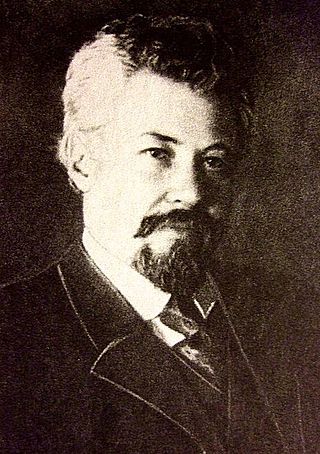
Elections to the Russian Constituent Assembly were held on 25 November 1917, although some districts had polling on alternate days, around two months after they were originally meant to occur, having been organized as a result of events in the February Revolution. They are generally recognised to be the first free elections in Russian history.

The July Days were a period of unrest in Petrograd, Russia, between 16–20 July [O.S. 3–7 July] 1917. It was characterised by spontaneous armed demonstrations by soldiers, sailors, and industrial workers engaged against the Russian Provisional Government. The demonstrations were angrier and more violent than those during the February Revolution months earlier.
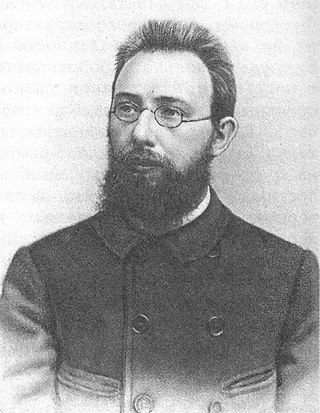
Vladimir Dmitriyevich Bonch-Bruyevich was a Soviet politician, revolutionary, historian, writer and Old Bolshevik. He was Vladimir Lenin's personal secretary.

Alexander Dmitryevich Tsiurupa was a Bolshevik leader and Soviet politician.
Joseph Stalin was the General Secretary of the Communist Party of the Soviet Union's Central Committee from 1922 until his death in 1953. In the years following Lenin's death in 1924, he rose to become the leader of the Soviet Union.
Nikolai Nikolayevich Kuzmin was a Soviet political and military leader. He was the political commissar of the Baltic Fleet during the time of the Russian Civil War.
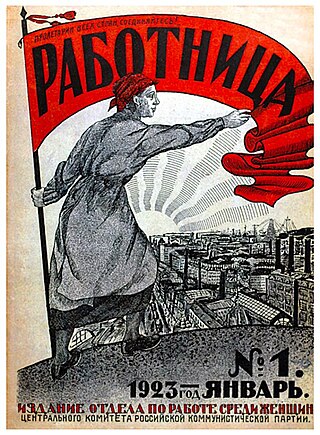
Rabotnitsa is a women's journal, published in the Soviet Union and Russia and one of the oldest Russian magazines for women and families. Founded in 1914, and first published on Women's Day, it is the first socialist women's journal, and the most politically left of the women's periodicals. While the journal's beginnings are attributed to Lenin and several women who were close to him, he did not contribute to the first seven issues.

Pravda is a Russian broadsheet newspaper, and was the official newspaper of the Communist Party of the Soviet Union, when it was one of the most influential papers in the country with a circulation of 11 million. The newspaper began publication on 5 May 1912 in the Russian Empire, but was already extant abroad in January 1911. It emerged as the leading government newspaper of the Soviet Union after the October Revolution. The newspaper was an organ of the Central Committee of the CPSU between 1912 and 1991.

The Party of Left Socialist-Revolutionaries-Internationalists was a revolutionary socialist political party formed during the Russian Revolution.
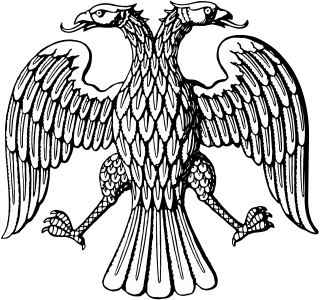
The All Russian Constituent Assembly was a constituent assembly convened in Russia after the February Revolution of 1917. It met for 13 hours, from 4 p.m. to 5 a.m., 18–19 January [O.S. 5–6 January] 1918, whereupon it was illegally dissolved by the Bolshevik-led All-Russian Central Executive Committee, proclaiming the Third All-Russian Congress of Soviets the new governing body of Russia.

Lev Borisovich Kamenev was a Bolshevik revolutionary and a prominent Soviet politician.
The Petrograd Soviet of Workers' and Soldiers' Deputies was a city council of Petrograd, the capital of Russia at the time. For brevity, it is usually called the Petrograd Soviet.
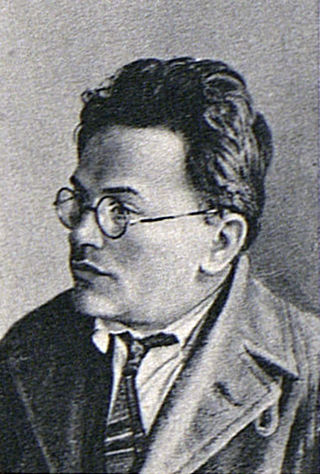
Georgy Ivanovich Safarov was a Bolshevik revolutionary and politician who was a participant in the Russian Revolution, the Russian Civil War, and in the executions of the Romanovs in Yekaterinburg and Alapayevsk.